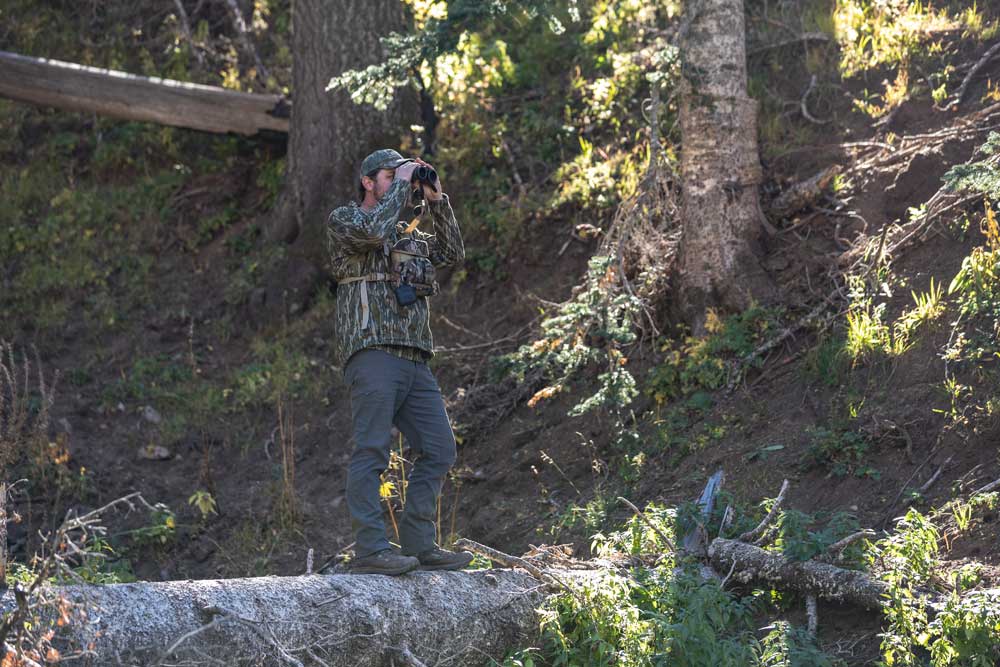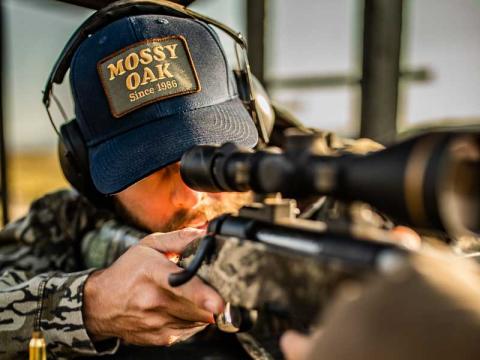When packing for a hike, most hikers try to pack as light as possible. If the hike is a short one, a little weight and inconvenience is not a problem. If the hike is long or overnight, weight and inconvenience is a big problem. Many hikers trail carry regardless of how long their hike is. All this begs the question: Should I trail carry, and how do I trail carry safely?

Your Well-Being Outweighs the Risks
The number one reason hikers carry is an encounter with a dangerous animal. Even if your deer hunting gear is still in your backpack, it's hard to be prepared for a sudden attack. We have all seen the video of the mountain biker riding for his life while a grizzly tries to run him down from behind. Those who live near bear country hear of near misses all the time. There are many reasons to trail carry, from a rattlesnake under the picnic table to coyotes after your canine hiking companion.
Know Your Weapon: Hunter Safety Tips
If your hiking is remote, then chances are you won’t be in contact with other hikers. The biggest risk for hikers in remote country locations is becoming stranded. Stranded hikers often need food or a way to signal a rescuer. In some cases, you may be stranded for days. A firearm can keep food in your stomach or alert rescuers to your whereabouts. More casual hikers who frequent popular trails will come in contact with other hikers. The overwhelming majority of hikers pose no threat. It is nice to know you and your fellow hikers can protect yourselves if you need to.
Before you decide to carry, you should know the laws and regulations of the area you plan to hike. If you’re hiking across state lines, you need to know the laws and regulations of both states. In many cases, you just need a permit. In other cases, you may not be able to trail carry at all. Do the homework and know the law. Penalties for illegally carrying a weapon are stiff.

Carry On
Here are a few firearm safety tips to consider when you trail carry:
1. It is not practical to wear a holster on your waistband, ankle or in a concealed carry shirt on long hikes. The friction these options create is painful. Instead, use a concealed carry pouch on the waistband of your backpack.
2. Moisture is a firearm’s worst enemy. It is difficult to keep your firearms dry when you’re hiking in bad weather. Pack a small bottle of gun oil to wipe your firearm down after exposure to the weather.
3. When packing for a long hike, remember that ounces equal pounds and pounds equal pain. Use a lightweight holster with a trigger guard. After mile 10, you will wish you did.
4. If your trail will require you to navigate water, make sure you have something waterproof to secure your firearm and ammo in.
5. Make sure you are proficient with your firearm. You should be comfortable with its function in any circumstance. Practice drawing from the concealed carry pouch on your backpack’s waistband and firing. Then, secure your firearm back in the pouch. Remember: You may have to do this in the dark or freezing weather.
6. If you’re using a concealed carry pouch on the waistband of your backpack, your firearm should be the only thing stored in the pouch. If the pouch has separate compartments for magazines, that is acceptable.
7. You may have others hiking with you who are not carrying. Make sure they know you are carrying and where your firearm is. If something happens to you, they need to know how to get to your firearm.
8. Ensure the pouch you’re carrying your firearm in is secured to your backpack. You don’t want it bouncing around as you go about your way.
9. When you stop to set up camp for the night, make sure you keep your firearm with you – especially if you have kids on the hike. It’s easy to set your backpack down, and soon one distraction leads to another. Before you know it, you’re not sure where your backpack and firearm are. Before you walk away from your backpack, secure your firearm on your person.

10. Even if your canine hiking companion has extensive gun dog training, a coyote can pose a threat. A coyote may not be a threat to you, but they are a big threat to your dog. Be prepared to protect your furry hiking buddy.
11. If you’re right-handed, mount your concealed carry pouch on the left side of your backpack’s waistband. If you’re left-handed, mount your concealed carry pouch on the right side of your backpack’s waistband. This will help you remove your firearm quickly and safely. You should practice this before you leave on your hike.
12. Remember that it may be legal to trail carry in the park, but it may not be legal to carry into buildings along the trail. This is an easy mistake to make. Make sure you follow all firearm safety rules.
Learn the 9 Rules of Gun Safety
Better Safe Than Sorry
Before you start packing for your next hike, do your homework regarding local, state and federal laws in the area you plan to hike. It can be tempting to dismiss backcountry camping rules but the penalties are steep, even for minor infractions. Make sure you’re proficient with your firearm, even when wearing a backpack. Try several different concealed carry pouches on the waistband of your backpack. Pick the pouch that works best for you and the firearms you carry. These tips should keep you legal, safe and ready to trail carry on your next hike.






























